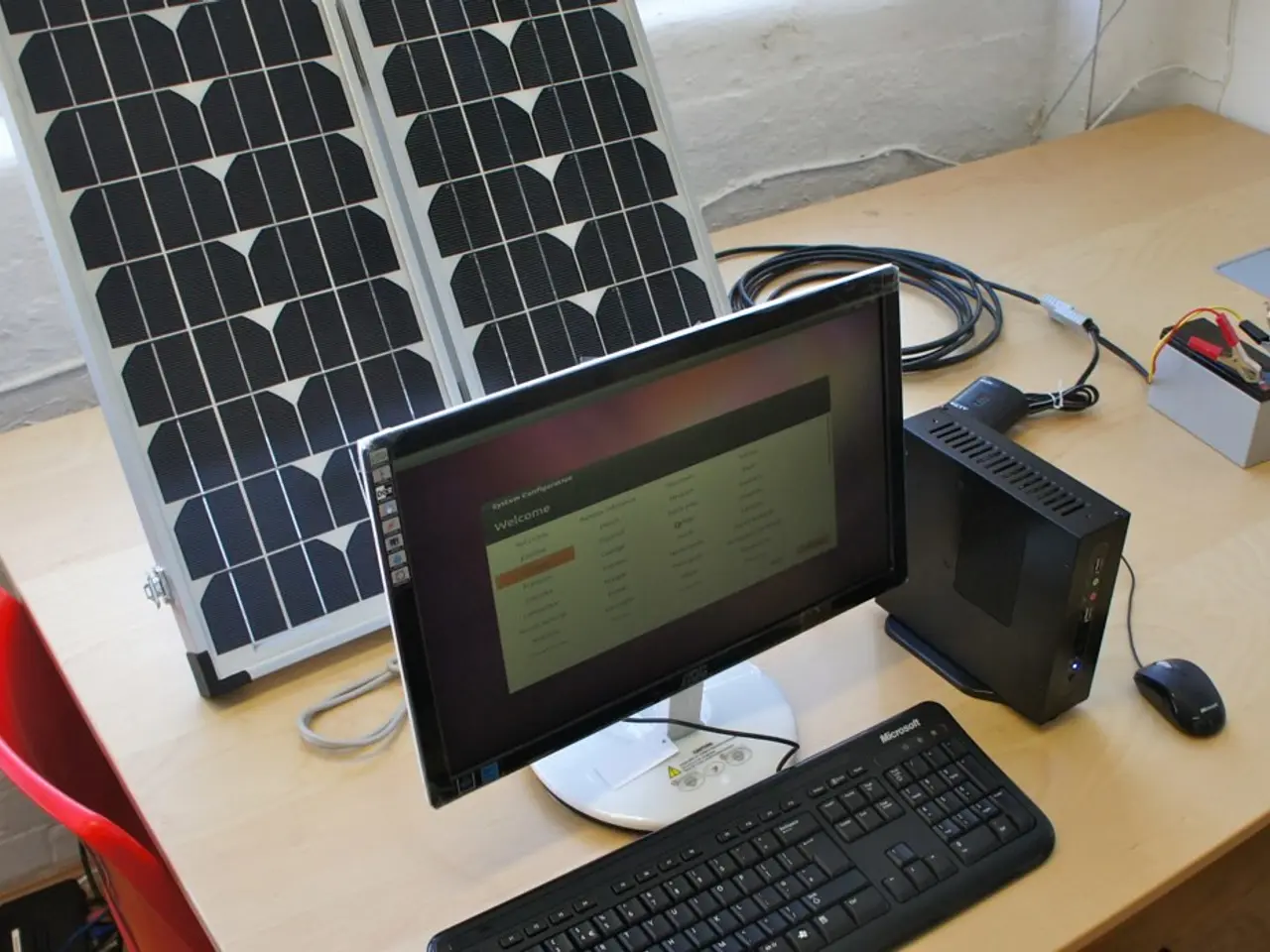Power Generation for Small Satellites Meets Required Compactness
CubeSats, compact and versatile spacecraft, require carefully designed Electrical Power Systems (EPS) to meet their unique power needs. These systems are integral to all aspects of the CubeSat's design, including thermal management, payloads, structures, and flight control.
Primary Power Sources
Solar Arrays
Solar arrays are the predominant power source for CubeSats from 1U to 16U sizes. They use space-grade Gallium Arsenide (GaAs) triple-junction cells to maximize efficiency in the limited surface area available. During sunlight periods, solar arrays provide the primary power generation and must be sized to supply enough power for peak loads plus charging the batteries. The output of solar panels can range from tens to hundreds of watts depending on the CubeSat size and mission requirements.
Lithium-Ion Batteries
Lithium-ion batteries serve as energy storage devices, providing power during eclipse or peak loads beyond solar array output. Typical battery capacities range from ~20 Wh for small CubeSats (1U-3U size) to over 100 Wh for larger ones like 16U. Battery management includes cycling and charging control to preserve longevity, considering depth of discharge and charge rates. These systems must maintain a stable bus voltage (often regulated around 3.3 V to 16 V depending on the bus design) for the spacecraft electronics.
Radioisotope Power Sources
While rarely used in CubeSats due to complexity, safety, and regulatory issues, radioisotope power sources provide continuous power independent of sunlight. They are more common in deep-space or long-duration missions where solar power is insufficient. Integration requires careful thermal and radiation management.
Fuel Cells
Fuel cells provide power by converting chemical energy and can be used for high-energy-demand missions or when battery mass is prohibitive. They require consumables and complex plumbing, which is challenging in small satellites but potentially valuable for long-duration or peak high-power operations.
Power Management and Considerations
Power Profile
CubeSat missions require balancing generation capability with peak and average power demands. Payload peak power drives sizing, while average power consumption determines sustained energy needs.
Power Margin
Designers typically include power margins (e.g., 20-30%) to account for degradation of solar cells over time, eclipse periods, and unforeseen power consumption increases.
Bus Voltage Level
Common bus voltages for CubeSats span from 3 V to about 16 V depending on platform architecture and component compatibility. Modern EPS modules support multiple regulated output voltages to power different subsystems.
Cycling/Charging
Lithium-ion batteries must be managed to reduce depth of discharge and control charge rates to extend battery life given the frequent eclipse cycles in Low Earth Orbit (LEO). The EPS includes battery management systems for safe charging, balancing, and thermal control.
Other Considerations
EMI Protection
The EPS system must protect itself and other subsystems from Electromagnetic Interference (EMI), bus faults, transients, and load faults such as overvoltage, filtering, short circuits, and more.
Launch Site Handling
Launch site handling is a major consideration in EPS design, as the EPS must be able to withstand the rigours of launch and deployment.
Space-based EPS
Space-based electrical power subsystems can utilize various power-generating methods, such as solar arrays, lithium-ion batteries, radioisotopes, and fuel cells. The LISA-T, a compact, stowable, thin-film solar array, offers small spacecraft power generation and communication capability when fully deployed in space.
In summary, CubeSat EPS design typically integrates high-efficiency solar arrays for primary power, lithium-ion batteries for storage and peak loads, and power electronics that deliver regulated bus voltages with built-in margins and battery management to optimize mission lifetime and reliability. While radioisotope and fuel cell power sources are less common due to complexity and scale, they remain options for specialized missions beyond Low Earth Orbit.
- The Solar arrays, harnessing space-grade Gallium Arsenide triple-junction cells, are the primary power source for CubeSats, maximizing efficiency in limited space-and-astronomy contexts, supplying power for peak loads and charging batteries during sunlight periods.
- Lithium-ion batteries, providing energy storage and power during eclipse or peak loads beyond solar array output, are common in CubeSats for missions requiring long-duration power sources, with typical battery capacities ranging from ~20 Wh for small CubeSats to over 100 Wh for larger ones, and necessitate careful thermal and radiation management considering depth of discharge and charge rates to maintain a stable bus voltage for spacecraft electronics.




